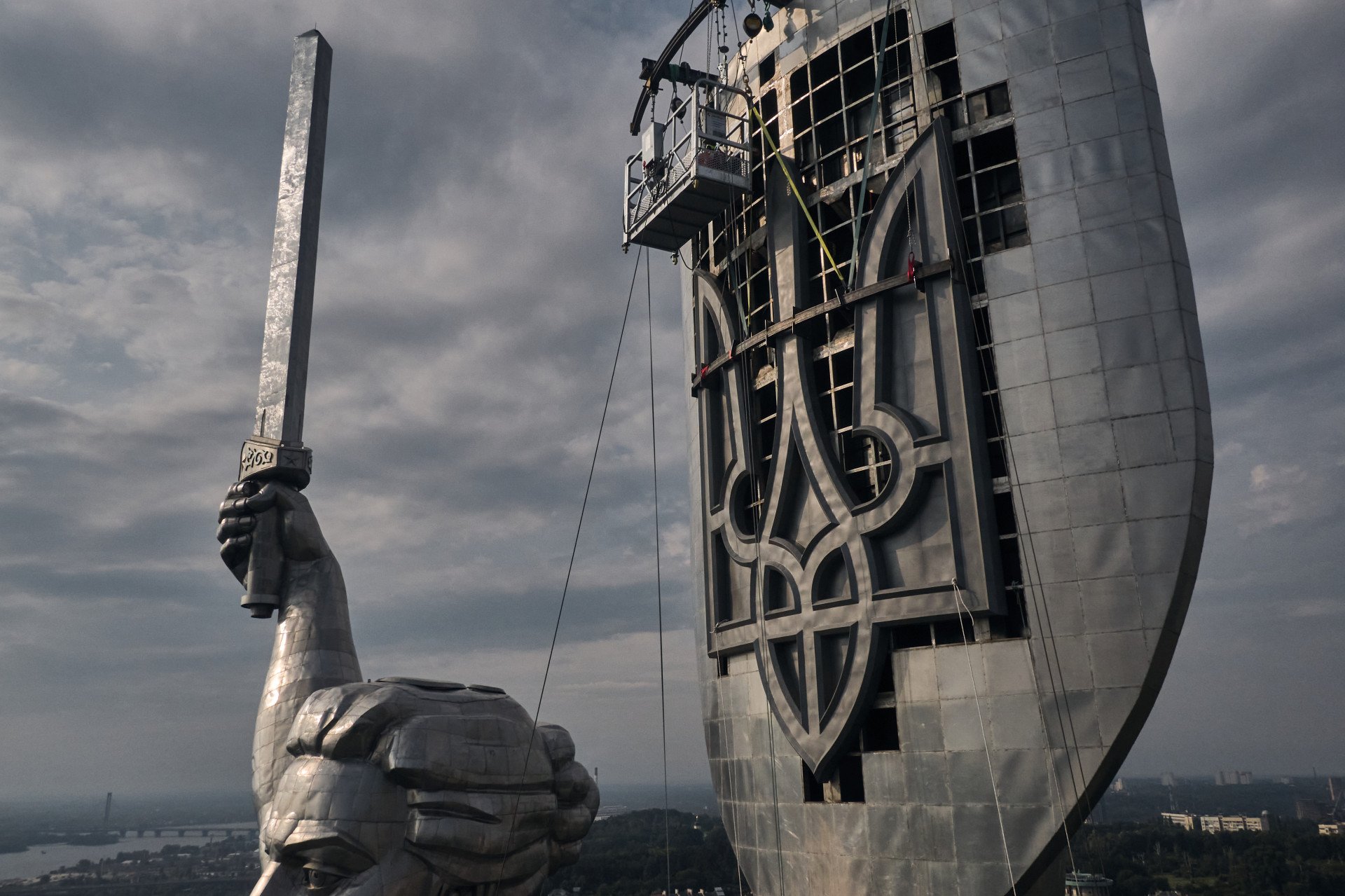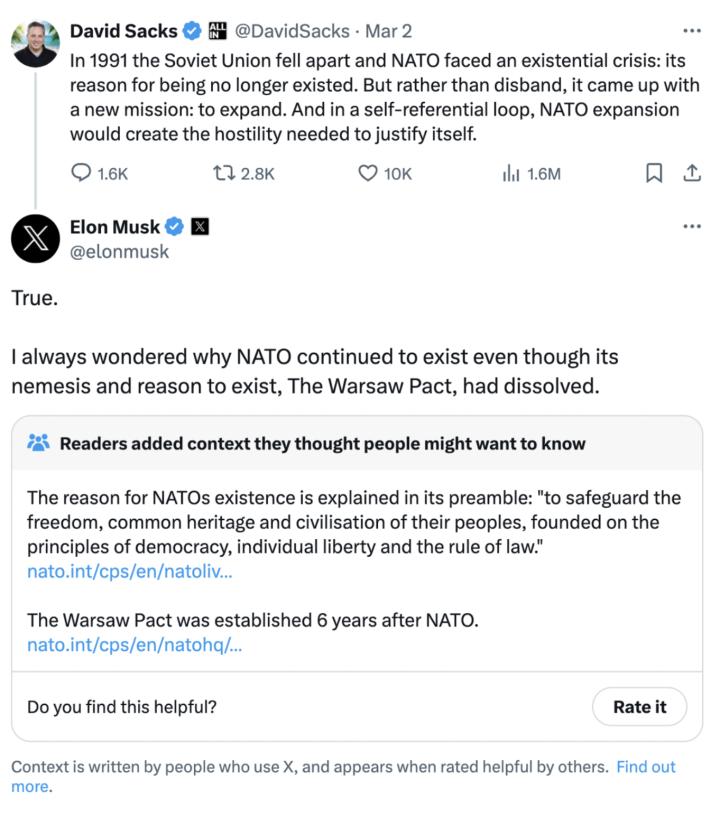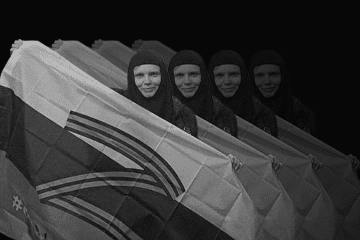- Category
- Anti-Fake
A Shield Not a Sword. Deconstructing Russia’s NATO Expansion Myth

Russia claims NATO threatens its borders, using it as justification for aggression. Ukraine sees NATO as a shield, not a sword. Where does the truth lie?
The Russian government has long claimed that NATO expansion is a threat to its security. This narrative, pushed by Russian propaganda, has become a convenient justification for a string of aggressive actions—the annexation of Crimea, the fuelling of separatist movements in Eastern Ukraine, and most recently, the full-scale invasion of Ukraine. Yet, a closer examination reveals this narrative to be a carefully constructed myth, designed to distract from the source of instability in the region: Russia’s own imperial ambitions. Let’s deconstruct it.
Defence, not offence
The North Atlantic Treaty Organization (NATO) was established in 1949 as a defensive alliance in response to Soviet expansionism. For instance, the Baltic states—Estonia, Latvia, and Lithuania—all former Soviet republics, expressed a strong desire to join NATO after regaining independence. These nations, acutely aware of their geographic vulnerability and past experiences under Soviet rule, viewed NATO membership as a critical safeguard against potential future aggression.
This trend of countries actively seeking NATO membership continues. Following Russia’s illegal annexation of Crimea and its ongoing war in Ukraine, Finland, a nation that had maintained a policy of neutrality for over 50 years, formally applied to join the alliance in 2022. This dramatic shift underscores the profound impact of Russia’s actions on its neighbours' security perceptions.
Unlike Russia, after the Cold War’s end, NATO did not embark on a land grab to the East. Instead, it adopted a cooperative approach, even offering Russia a path toward partnership. The alliance gradually reduced its military footprint in Eastern Europe, demonstrating a lack of aggressive intent.
Here’s where the myth-making begins. The narrative of a threatening NATO conveniently ignores the organization’s core principle: collective defence.
Imagine a neighbourhood watch program—a group of residents agreeing to come to each other’s aid if attacked. This is essentially what NATO is. Membership offers a guarantee of mutual assistance in the face of an attack. Countries like Ukraine, scarred by Russian aggression, see NATO membership as a shield, not a sword.
Furthermore, the right to choose alliances is a fundamental principle of international relations. No country, including Russia, has a veto over another nation’s sovereign decision to join a defensive pact. The narrative of a threatened Russia disregards this basic right and attempts to establish a sphere of influence based on unlawful intimidation. It’s akin to a bully claiming a playground as his “territory” and threatening violence if others attempt to play there.
It’s important to remember that Ukraine itself poses no threat to Russia. It is a peaceful nation with no track record of territorial ambitions. In contrast, Russia’s history of aggression paints a different picture. Moldova, Chechnya, Georgia, Syria all stand witness to Russia’s troubling track record of using force to achieve its geopolitical goals. Attributing its own behavior to a fictitious threat from NATO is a classic case of deflection.
Ukraine’s perspective
Ukraine’s desire for NATO membership seems to be a direct consequence of Russia’s own actions. Before 2014, Ukraine maintained a neutral stance. This commitment to neutrality was boldly underscored by Ukraine’s willingness to relinquish its inherited nuclear arsenal.
In 1994, Ukraine, possessing the world’s third-largest stockpile of nuclear weapons at the time, agreed to dismantle them in exchange for security assurances from Russia, the United States, and the United Kingdom. This decision demonstrated Ukraine’s trust in the international community and its commitment to peaceful coexistence. However, as we now know, these security guarantees proved insufficient in the face of Russian aggression.
In 2014, Russia’s annexation of Crimea and fomenting of war in Donbas shattered any sense of security Ukraine may have had. Faced with a revanchist Russia, Ukraine has a legitimate right to seek security guarantees through NATO membership.
While public opinion in Ukraine on NATO membership was lukewarm before 2014, with polls showing limited support, everything changed with Russia’s aggression. In 2012, under a pro-Russian government, only 28% of Ukrainians favored joining NATO.
However, by 2017, that number had skyrocketed to 69% following Russia’s annexation of Crimea and the war in Donbas. This dramatic shift reflects Ukraine’s shattered sense of security and its desire for the ironclad protection that NATO membership offers. This popular will was further cemented in February 2019 when Ukraine’s parliament enshrined NATO membership as a central goal in the constitution.
Following Russia’s full-scale invasion in 2022, Ukraine formally applied to join NATO, a bold move that underscores the country’s unwavering determination to secure its future within the alliance.
Cooperation gone cold
Ironically, Russia boasts a history of collaboration with NATO. In the aftermath of the Cold War, NATO actively assisted Russia in dismantling its vast nuclear arsenal and integrating it into the broader European security framework. The Partnership for Peace program, launched in 1994, aimed to foster military cooperation and trust between NATO and former Warsaw Pact countries, including Russia.
However, this period of cooperation began to sour in the early 2000s. Russia’s internal political trajectory, marked by a growing authoritarian turn under President Vladimir Putin, significantly strained relations. Additionally, Russia’s assertive foreign policy, particularly its efforts to reassert control over its former spheres of influence, clashed with the security aspirations of neighboring states.
The dangers of perpetuating the NATO myth
The consequences of perpetuating this myth are dire. It fuels tensions, undermines trust, and ultimately makes Europe less secure. By claiming a defensive alliance poses an existential threat, Russia evidently seeks to justify its own expansionist aims and deflect international criticism. It’s a tactic straight out of the propaganda playbook: create a fictional enemy to distract from your own misdeeds.
In early March 2022, a social media exchange between Elon Musk and investor David Sacks reignited a debate about NATO’s purpose in the post-Cold War era. Sacks questioned the continued existence of the alliance after the dissolution of the Warsaw Pact, its supposed primary adversary. Musk, echoing this sentiment, expressed confusion about NATO’s rationale.

This exchange sparked a wave of responses highlighting the broader mission of NATO as outlined in its founding treaty. Critics pointed out that the Warsaw Pact was actually established four years after NATO, suggesting a historical inaccuracy in the initial argument. More importantly, they emphasized the core principles enshrined in NATO’s preamble — safeguarding freedom, democracy, and the rule of law—principles that extend beyond a singular adversary.
Distorting this narrative through misinformation plays directly into Russia’s hands. By portraying a defensive alliance like NATO as a threat, Russia aims to sow discord, weaken international resolve, and deflect blame for its own aggression. This tactic is a hallmark of propaganda. Understanding the facts and rejecting demonstrably false information is critical in navigating our modern geopolitical landscape.
-5adb65e550f9dec24a01a35019e4b6b5.jpg)

-46f6afa2f66d31ff3df8ea1a8f5524ec.jpg)
-8ddd9e24f95bb9d73d6d11d75f774999.png)
-29a1a43aba23f9bb779a1ac8b98d2121.jpeg)
-283d77c1379d612e6f72cf1b6de7dacb.png)
